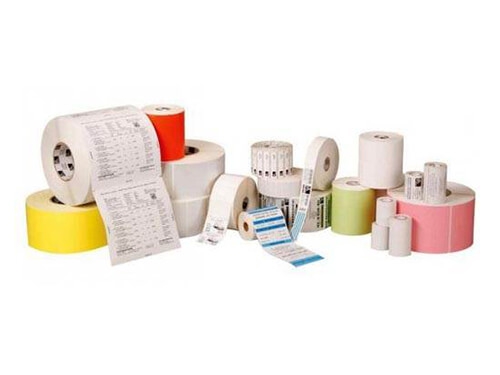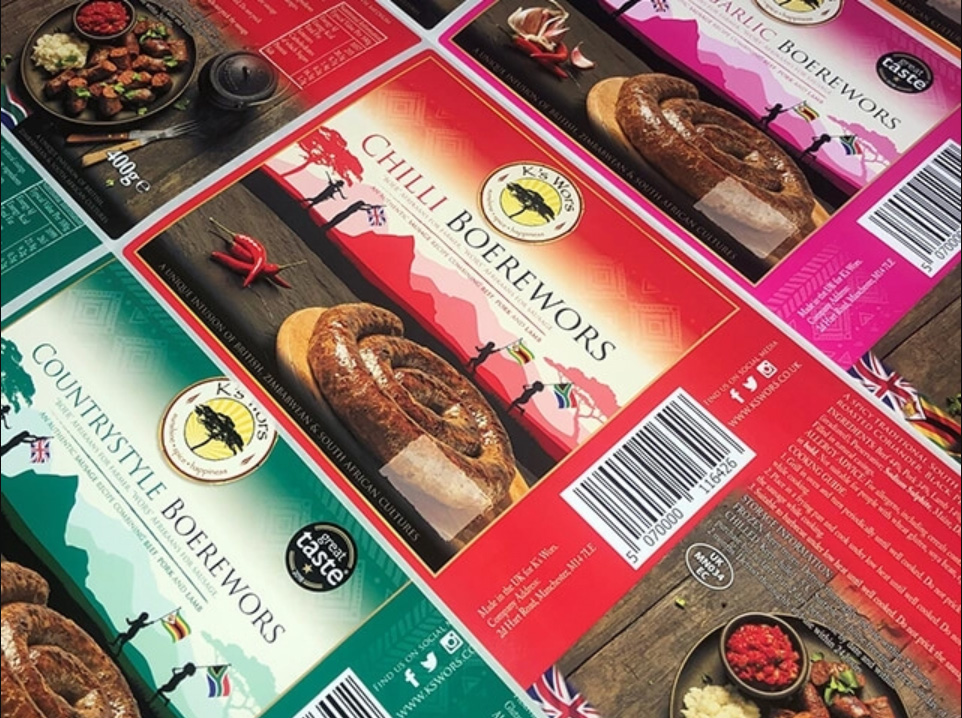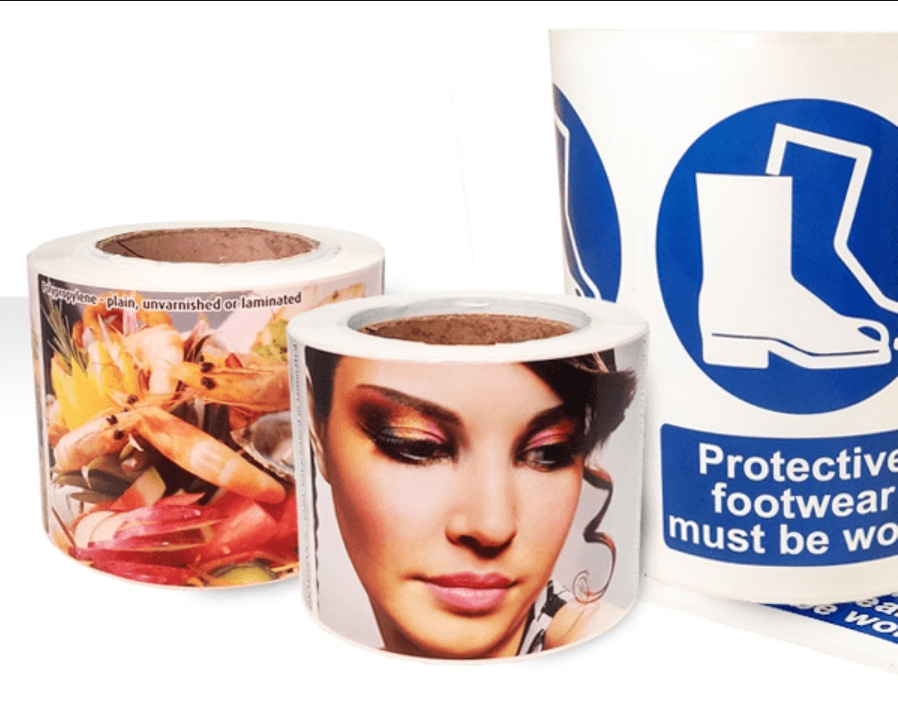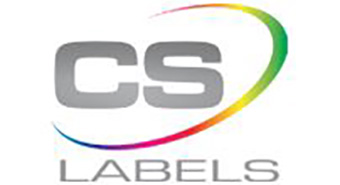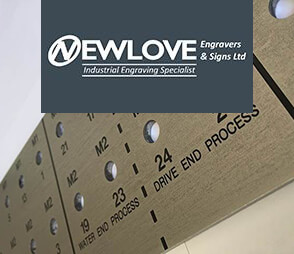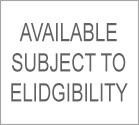- Contact 0870 350 7767
- |
- Advertise
A Guide to Adhesive Labels
and Printed Labels for Businesses
Businessmagnet has been promoting UK Label companies for 15 years
Labels are witnessed by all of us throughout every day of our lives; labels are found on almost everything we use, especially at work. We see labels on electronic goods or even the underside of your keyboard (yes I just looked as well), barcoded labels appear on almost all food products, labels on clothing and printed labels appear almost everywhere. The label industry is thriving and for good reason...our lives are full of items that need labels. From the small table of Jams we see at a Fete, uniquely designed labels in the collar of a garment right through to bespoke labels designed for use in volatile environments. Labels are here to stay with an ever increasing variety of uses and an expansive range of digital label applications that keeps on growing. Businessmagnet are proud to provide a broad spectrum of label suppliers that cater for almost every application conceivable.
Interesting Label Supplier categories
Adhesive Labels Guide
Introduction
Labels are so broad in their uses that many types exist. Equipment and machinery that is used to produce, print and read labels is a related but separate subject that we will cover off in another guide. Here we will discuss the terminology and types of labels available that may help to narrow down to the label you may need for your next project. We couldn't possible cover off everything label related, but the material types, adhesives used and print types are certainly some of the main areas to brush up on. Some specialist label applications and materials could pose risks and we urge the reader to contact an expert supplier. A list of label suppliers can be found here; reputable knowledgeable companies that will be more than willing to help with your label requirements.
Labelling Jargon and Terminology, what does it all mean?
Label production can be extremely delicate and complex with specialist set up and application techniques. Knowing some of the terminology a label supplier may use could go a long way in ensuring your get what's right for your product or application. Within the industry, terminology can become quite technical and form a basis for specification of the label in question. For example, 'Adhesive Failure' is a measurement of the total lift or partial lift from the surface applied. So you may hear, these labels have a low adhesive failure point or there may be a specification for that particular label relating to this measurement. We cannot possibly cover off all of the terminology here, but we can provide explanation to some of the popular terms used. For a comprehensive list of label terminology see the Labelling Jargon Section
Choosing the Correct Label for your ApplicationDeciding on the correct label to use can be overwhelming. You may know what you intend the design to look like, and the designated product where it will ultimately be presented; but what type of label do you need? What properties does the label need to have to meet your project requirements?...and perhaps, what would be the most cost effective solution for you? Labels all have properties of their own which make them suitable for certain uses and unsuitable for others. The look and feel of the label, cost, and its ability to stick to the surface intended is of major importance and sometimes a balance has to be struck between any one of these in terms of function, look and longevity to arrive at a suitable solution with budget in mind.
If you already know the exact label type you need, then it is a simple case of contacting suppliers, presenting them with your requirements, maybe check some samples and agree on pricing. Your project or product maybe new, you do not yet know what label would match your aims; again a supplier will be able to assist.
Here are some questions that maybe useful in understanding the type of adhesive label your project needs:
- How many labels will you need?
Greater numbers of labels will realise a lower cost per label and help to offset any initial tooling costs for certain types of label. Think ahead to anticipate numbers as best you can as significant savings can be made with larger order quantities. Bare in mind though, labels have storage lives commonly around 1 year.
- Will you need equipment to apply and print to the labels?
We mainly touch on a complete printed solution as provided by a supplier in this guide, but there are a variety of labels that will need specialist equipment to apply or transfer your image to. This really is another subject but is of consideration if the label type or project requires new equipment. For example, blank labels that you intend to print thermally onto will require a thermal label printer.
- What type of environment will the labels be used in?
Label materials vary widely, some materials providing a luxurious feel, some specifically designated to withstand harsh environments. Labels maybe subject to chemical exposure, moisture, toxins, freezing, high temperatures or rapidly changing environments. These types of applications will require labels with special properties and you will almost certainly need to discuss this with a specialist label supplier.
- Will your labels be applied to food products directly?
Labels that may be applied to or come into contact with food produce will need to be approved as food grade with an adhesive also meeting certain standards.
- Will you be using your labels for marketing or presenting your brand?
Quality materials specifically designed for high quality printing maybe right for you. Foil components may be more expensive but ultimately more effective at promoting your brand. Metalised labels from hot foil stamping can become expensive but give a luxury feel that stands out well.
- How will you dispense your labels?
Labels along with a liner are commonly supplied on a roll to be dispensed from an applicator gun or printer. Sheets of labels maybe more appropriate for marketing or where you have your own cutting and converting equipment.
- What form will you be applying the labels to?
Spherical, cylindrical or uneven surfaces present challenges and require a good pressure sensitive adhesive. Small labels placed on a curvature like a bikes frame for example are more likely to edge curl or peel than those fixed to a flat surface. The adhesive, label thickness and label size will be factors in determining the best option. Flexible squeezable bottles for example will need a label that can withstand compression and twisting and a flexible adhesive. Rough card will need a different type of adhesive.
- What type of surface will the label be applied to?
The substrate that the labels will be applied to may also present challenges. Certain materials require specific adhesives for the label to remain affixed. The environment in which the label is applied and the label application method will ultimately increase or decrease the longevity of the label.
- Where will you be storing your labels?
Not only do we need to consider the environment in which the label will be used, consideration of where they will be stored also need to be given. Very large quantities in fast paced facilities may be stored high up on warehouse racks. Temperatures can increase to levels in upper warehouse storage environments to the point that label adhesive starts to melt or stick to the backing liner. Moving labels from high to low areas can also subject them to rapid changes in temperature degrading their performance or presenting application difficulties. Incorrectly storage labels can mean large quantities of unusable labels, delays in moving your products and wasted money. If in doubt, always consult your supplier for specific storage instructions.5
- Will your product need to be used immediately upon label application?
The time it takes a pressure sensitive adhesive to cure can take up to 24hrs. The initial instant grab will usually suffice to keep the label positioned whilst the adhesive cures, however, it is worth noting that this cure time may be an important factor if a product is to be shipped or sold immediately or shortly after application. Labels with fast cure adhesive times of an hour or two may be more appropriate.
- When do you need your labels?
It can take a significant time to get your labels ready for use. There are several steps that could include, discussion of specification, ordering, draft approval (if printed), production and delivery. Some suppliers may have a larger capacity than others if your requirement is time sensitive. Being well prepared and thinking ahead can also allow a more thorough planning stage and potentially savings on fees charged for faster services.
- How many colours does your label design need?
Labels produced in full colour use a CMYK 4 colour process. Spot colour can be used to increase colour detail up to 10 colours or potentially 16 with digital print.
- Will you need to order the same label again in the future?
Deciding on the type of print process with your supplier, ie. digital or flexographic may dictate the pace and ease in which a further run can be produced.
- Are variations required from label to label?
Information that varies from label to label like sequential numbering or voucher codes can be achieve via variable data printing at reasonable costs. Unique lettering a number can present good marketing opportunities and customer focus.
- What shape and size do you need your labels to be?
Shape and size can affect costs greatly and may also have implications and considerations regarding their application. Some label suppliers will have thousands of pre made die cutters from past work. Choosing from a previously used shape will keep costs down and decrease production time.
- Do your labels need to display a lot of information or language
variations?
Various labels can be used to contain small print whilst not detracting from the main message or image. Hang tags and booklet labels can house extended content in a folded form with an indicator to reveal or unfold for further information
Lets give you a head start with some of the common types of labels and print
methods to see if you can
recognise qualities you need for your application. While these labels all have
certain characteristics, they can overlap in their properties in terms of uses
and applications giving rise to many options.
A4 Labels
Very common and likely what most of us think of when we think of labels and
ideal where a blank label is required to be applied by hand. A4 adhesive labels
are labels presented in columns and rows ready to be printed with a standard
inkjet or laser printer, some may accept both printer types depending on the
finish . Commonly used within mail merge applications for addresses, photos, low
quantity production runs. The shape of the label can be rectangle, square,
round, oval or bespoke. These labels can vary in quality and finish and are
available in a range of materials such as polyethylene, vinyl, paper and
polyester. Gloss, matt, transparent, coloured and metallic finishes are
available from most suppliers with other specialist properties such as
waterproof and removable adhesives along with freezer applications also being
popular. There are a vast number of predetermined sizes available with this type
of label, many of which are industry standard; although some suppliers offer a
custom service. These labels are not usually suitable for automatic or machine
application.
Tamper Evident Labels
Available in a wide range of materials shapes, designs and dispensing methods -
tamper evident labels have a variety of uses. Many products carry labels that
bridge two parts or cover screw holes. This is important where products have a
warranty in place with conditions placed upon any disassembly of the product. In
this case, trying to remove the label will result in either the destruction of
the label or the top layer separating from the lower layer displaying 'VOID' as
a clear indicator that an attempt was made to tamper with parts of a product.
Assets and higher value products are often labelled with a security label that
carries the identification of the owner or company name. Attempts to remove
these labels from stolen goods result in a prominent difficult to remove
indicator that the item has been tampered with making the items difficult
re-sell.
Containers specified for the end user such as a food product or sensitive
information also benefit from tamper evident adhesive labels as a clear
indicator that the box, or container has been has been opened. It is usual that
a VOID or SEAL BROKEN message is displayed when the label is removed providing a
clear indicator there has been an attempt successful or not to access the
contents.
Domed Labels or 3D Labels
Adhesive domed labels are usually supplied on rolls or sheets and are commonly
referred to as badges, 3D stickers or resin badges. They hove a lovely deep look
to the label and are a very popular to promote brand awareness. Applications are
almost endless with an almost indefinite number of possible uses. The hard
wearing thick resin surface protects the adhesive label from scratches and
scuffs. Domed labels come in a range of sizes and are usually 1mm thick or more.
As the resin coating is very robust they suit harsh environments whilst still
retaining a quality feel. Gloss finishes are most common although matt and satin
finishes are available from many suppliers.
The flexibility of the resin can vary with some being able to conform to
slightly curved substrates while others being suitable only for flat surfaces.
Important properties such as water, scratch and frost resistance are common
requirements within harsh exterior environments with some being very UV stable.
Polyurethane is a common resin that is used for the adhesive label type. During
manufacture the liquid resin is usually applied to the design using volume
controlled droplets and then baked. Vinyl is the most common media used
for the design.
Adhesive Asset Labels
Asset labels carry an identification number and / or barcode. Keeping track of
assets within a company can using this type of label can save time and provide
an easy way of reporting information such as depreciation, repairs, servicing
and age. There are many uses for asset labels and tags although they are most
commonly seen on electrical equipment in office or industrial environments.
Asset labels can be coupled with a tamper evident property to provide a visual
trace of attempted removal. Most asset labels are specified with sequential
numbering or coding providing a unique identifier to the equipment they are
applied to.
Vinyl Adhesive Labels
Vinyl labels are cost effective and are available in varnished and laminated
coatings to protect the print. Normally supplied on rolls but can be supplied in
sheet form, these peelable labels are ideal for a huge range of applications.
Full colour prints in CMYK and Pantone matching are available from most
suppliers to ensure your design is replicated in print. Finishes in matt and
gloss using a UV varnish or polyester film ensures the vinyl labels remain
durable in a varied number of uses. The adhesive as with most labels can be
specified as temporary, peelable, hi-tack of permanent depending on the surface
and conditions the label is intended to be subjected to. Vinyl labels can be
supplied as water resistant, so are suitable in wet environments and the
coatings can protect against yellowing so the design remains vibrant for a long
duration. Clear vinyl is useful where the colour of the product is to be used as
the background colour giving the design a crisp look.
Adhesive Barcode Labels
We will be compiling another guide more specific to barcode labelling, however,
we feel they do need a mention here. Adhesive barcode labels are extremely
popular and are a part of every day life in almost everything we buy. Barcode
can be printed onto almost any type of adhesive label with the most obvious
being the labels we see and use during point of sale. Almost every application
from product labelling to packaging, to self replenishing systems will utilise
this rapidly growing technology. This guide mainly looks at the various label
types and materials with barcode labelling opening up such a vast number of
subtopics for consideration we will just summarise their benefits. Barcode
systems save time and money, automatically providing feedback through readers to
central databases for stock replenishment, monitoring, time and attendance
systems, deliveries and other key information. The most popular formats are
EAN-13 normally used in retail and also QR formats commonly read by mobile
phones. Barcodes do not have to be bland, in fact graphics and colours can
accompany a barcode for brand awareness and promotion of products making them
visually eye catching as well as efficient.
Flexographic Labels
Flexographic or flexo labels are useful where long runs of high quality labels
are required. Flexographic presses are efficient and fast allowing some
significant cost savings over other types such as digital that are suited to
shorter run. These labels will usually confirm to a set number of colours but
can use conventional materials and coatings to provide cold foil, hot foil,
laminations, spot coatings and high builds to achieve the desired effect or
finish. The continuous automated print process provides consistent and
repeatable results throughout the entire run of labels at a fast pace making
them cost effective where little variation is required throughout production.
Speeds of up to 150 meters per minute can be achieved creating large volumes of
labels in a short space of time. Coatings and die cutting with any additional
embellishments are carried out in some cases during the same run at a different
section of the machine. Whilst flexographic printing is suited to long
production runs, the process requires the use of purpose made plates that
creates some rigidity to projects that require changes throughout the run or
multi labels of a different design.
Digital Labels
There are many technologies available to print digital labels. Sophisticated
systems utilise digital offset presses that use a photo image plate; this allows
the image to be altered with each revolution of the printing cylinder. Digital
labels have been in production for many years and have made cost effective high
quality label printing more accessible. As there is no need for printing
plates, the preparation time to print is reduced as are the costs and the label
design can be updated frequently. The ability to update the image on the fly
allows for interesting alterations to the text and barcodes throughout the run
which is ideal for sequential numbering or personalised labelling. Literally
thousands of designs can be incorporated into a single run where no two labels
are identical. Digital adhesive labels are also more environmentally friendly
then other methods that require the creation of plates and components which
eventually become waste materials. Colour matching through CMYK or pantone is
common with this print type and some printers will add additional colours to the
typical CYMK pallet to increase colour gamut. Multiple processes to the
production can achieve luxurious finishes with specialist coatings and
embellishments.
Labelling Jargon and Terminology
ABC or Anti-Block Coating
Used on the backing of the label lining to prevent a roll of labels from
becoming attached to the liner as they are unwound from the reel.
Abrasion Resistance
Fairly self explanatory; a label has a resilience to friction which may occur
across its surface or coating. It is the properties that a label carries that
resists wear.
Adhesion
Especially important with some application, not to be confused with adhesive;
the force or effort that is needed to peel a label from substrates. This complex
measurement will carry time elements and tests on multiple surface types to
understand the labels properties.
Adhesives
An array of coatings used to provide a bond between the label itself and the
surface to be applied to.
Adhesive Failure
The point at which a label may peel or become removed entirely. This could be
measured under differing circumstances or time intervals.
Residue
When a label is removed from its surface or backing material, the amount of
adhesive left behind can be termed as residue or adhesive residue.
Transfer
Not a transfer as in the kind we know, but the process of transferring the label
from one surface to another.
Barcode Label
A specific type of label presenting with bars or squares with a particular
pattern of spacing.
Barcode Validity
A test of verification to ensure that a labels code can be read reliably and
repeatably.
Bleed
Used within the print industry but specifically within label use we observe
bleed to occur when print extends past the outer trim of the label.
Blind Embossing
The impression into a surface to create a raised surface on blank paper.
Bond Strength
Each label carries its own characteristics and the strength of the bond by the
adhesive coating can be measured as a force that is required to separate the
label from a surface.
Butt Cut
During the cutting process, a cut is made through the label to the liner with
square corners. This type of label doesn't have an edge between labels which
limits their use to certain applications.
Backing Liner or Carrier
The backing substrate a label is presented on.
Chemical Resistance
Resistance to various chemicals and the level in which a label can withstand
deterioration to those chemicals.
Coated Paper
A fairly broad term describing the coating applied to the surface of a label.
Continuous Labels
As the term implies, these are labels which are presented on a continuous label
stock or material which have not yet been cut.
Cross Directional
This cut to paper or label is made across the grain. Cross grain exposes paper
much like the end grain of wood to humidity resulting in weaker properties.
De-lamination
Labels can be produced with varying numbers of layers depending on the
application they are to be used. De-lamination refers to the seperation of any
layer from another.
Destructible indicator Label
A specialist label made with specific facing material that has a low strength
making any attempt to remove visually obvious.
Die
Basically, a cutter used to cut the label shape.
Die Cut Labels
Labels that have been cut by a die ready for removal from a liner.
Direct Thermal
DA printing process that produces images using pins that had been rapidly heated
to activate a coating already on the facestock.
Dry Peel
Quite commonly used for voucher and coupon stickers, the adhesive leaves behind
no residue and the bottom ply is usually clear.
Edge Curl
An outer edge of a narrow label or tape that has curled away from the substrate
or liner .
Edge Lifting
Labels can lift at the edges from the substrate they are applied to. Thicker
labels and curved substrates are a recipe for lifting as is a weak bond.
Elongation
Labels can stretch on application or removal resulting in elongation.
Embossing
Not specific to the label industry, but a process that enables an image to be
impressed to produce a raised surface.
Emulsion Adhesive
Polymer resins create an adhesive that is far friendlier to the environment than
solvent base adhesives.
Cross Directional
This cut to paper or label is made across the grain. Cross grain exposes paper
much like the end grain of wood to humidity resulting in weaker properties.
Facestock
Specialist materials like films and fabrics which the topcoat and adhesive are
applied. The images and graphics applied are protected by this surface that
repels moisture and other contaminants.
Fanfold
As the term implies, labels are presented on a fan folded backing that allows
labels to be dispensed from a continuous backing.
Film
The face of a label can be composed of many types of materials or films.
Polyester, Acestate and Vinyl to name a few.
Finish
Just like other materials, we can refer to finish as the property the surface
material posses to create a gloss, satin or matte finish.
Food Grade Labels
Labels designated food contact or food grade use adhesives that meet standards
for direct food labelling.
Flagging
This commonly occurs on labels that are oversized for a container for example.
The label will exhibit bulges or lumps. Using correctly sized labels and
understanding any irregularities in the application will avoid flagging.
Flame Resistant
Labels can posses the ability to withstand high temperature application or even
direct flame. A retardant property will prevent the label from continuing to
burn after the source of heat has been removed.
Flexographic
Flexible plates rotate die cutters in the printing process and utilise fast
drying inks for converting and lamination purposes.
Fogging
Labels can degrade over time due to moisture whereby their outer surface changes
its gloss level characteristics resulting in a fog like appearance.
Foot First
Labels dispensed as foot first or foot leading will present the bottom of the
label off of the roll first
Four Colour Process
A system of colour that's certainly stood the test of time - this is a process
of reproducing full-colour printed images as an industry accepted standard
referred to as CMYK. In the process, an image is converted to sets of screened
negatives composed of dots of various sizes; each separate colour requiring its
own negative. The separate colours are made into individual printing plates. The
overlapping dots of colour consisting of Cyan, Magenta, Yellow and Black produce
the full colour image. Digital alternatives are used more frequently these days.
Head First
Labels dispensed as head first or head leading will present the top of the label
off of the roll first
Heat Activation
Adhesive films can require a heat activation process to activate their bonding
properties - at a suitable melting point the adhesive film can be applied
to the label.
Heat Resistance
Specialists labels can be produced that withstand physical changes caused by
exesive temperatures.
Hot Stamping
Hot stamping can be described as the transfer of an image to a substrate by
using a positive copy die.
Hot Foil Stamping
A process that can be used on labels that gives a metallic quality to the print.
This gives a luxury look to the label.
Impregnated Paper
A Some labels are made from porous materials like paper which are impregnated
with ink instead of receiving a coating.
Initial Tack
The adhesive used for a label will usually have two steps to the bonding
process. An initial tack as the bond strength required to hold the label in
place, a secondary stage is achieved at full bonding strength.
Laser Printing
This electro photographic process is frequently used within the label industry.
A projected laser beam is used to read the surface of a drum which creates an
electrostatic attraction of toner. A transfer roller than fuses the toner onto
the label.
Lay Flat
Lay flat labels as the name suggest are normally used in sheet applications
where the resultant label produced posses good anti-curling characteristics.
Liner
The liner carries the facing label and adhesive. The bottom layer of the label
in a pressure sensitive construction almost always has a release coating the
prevents the label from sticking to the backing. This allows the label itself to
be removed along with the adhesive ready for application. The liner is also used
as a support during the cutting and printing process.
Kiss Cut
A kiss cut is made through the pressure sensitive label at any direction leaving
no margin or gap between each label similar to a But Cut.
Microns
All labels have a thickness that is usual given in microns - that is one
thousandth of one millimetre.
Laminating or Over Laminating
Laminating a label provides a film to the label to protect or enhance the
design.
Peel Adhesion
The force required to remove or move a pressure sensitive label from a test
panel under differing removal criteria and test conditions.
Pin Feed
Usually seen as punched holes into the left or right margins of a continuous
form, like a roll.
Polyester
A film that has good moisture resistant properties to solvents, oils and other
chemical types.
Polyethylene
Polyethylene is an extruded durable flexible film with good moisture resistance.
Polypropylene
This plastic has properties similar to polyethylene but has a higher temperature
resistance and strength.
Polyvinyl Chloride
Polyvinyl can be made into a film and can come on a variety of forms that are
suitable for label production.
Pantone
Designers and printers use a pantone standard scale colour matched reference for
a transferable colour rendition.
Pressure Sensitive
Referring more towards the adhesion properties of a label, this term can apply
to a broad spectrum of permanent, temporary or removable labels. Pressure
sensitive adhesive requires no activation by an additional solvent or water.
Release Liner
An extension of the term 'Liner' that really means the same but is used within
the label industry. Release liners are support the label through the die cutting
process and assist the transportation of the label from the applicator or
printer.
Roll Labels
A Pressure Sensitive labels that are produced in a continuous roll.
Screen Printing
Ink is forced though a screen design onto the material or object to be printed.
Self Adhesive Label
Pressure sensitive adhesive and a liner along with the face stock to form an
instant single solution application without further adhesives.
Self Wound
Labels presented on rolls with pressure sensitive adhesive on both sides with a
single liner.
Service Temperature
Pressure Sensitive labels can withstand a range of temperatures, usually
measured after 24 hours when the adhesive has cured fully on the substrate.
Sheer Strength
The internal cohesive strength of the label and its adhesive.
Sheeting
With reference to labels only, this is a process where stock rolls of labels are
cut into sheets of a specific size and width.
Storage Life
Every label has a time period where stability of the labels characteristics
remain unchanged. Most labels will last for one year in storage.
Static
cling
Electrical charges as a result of static enable a potential grab of the label to
a certain substrate without adhesive. This can be beneficial or problematic
depending on the application.
Subsurface Printing
With reference to labels only, this is a process where stock rolls of labels are
cut into sheets of a specific size and width.
Storage Life
Every label has a time period where stability of the labels characteristics
remain unchanged. Most labels will last for one year in storage.
Spot
Colour
These are colours in addition to the standard four colours used in the process
to enhance or detail a design.
Static cling
Electrical charges as a result of static enable a potential grab of the label to
a certain substrate without adhesive. This can be beneficial or problematic
depending on the application.
Substrate
The permanent surface a label is attached to or temporary surface in the case of
a temporary application.
Tack
A label with a tack characteristic can quickly grab to a surface with minimum
pressure.
Tamper Evident Labels
Labels that clearly demonstrate through destruction or indication that they have
attempted to have been removed, cut or peeled.
Tear Strength
Materials can retain strength laterally and longitudinally. Tear strength is the
labels ability to withstand a full or partial tear.
Thermal Transfer
Less than ideal environments may call for long life application. Thermal
transfer ribbons along with a paired label can produce a long life adhesive
label or tag.
Tooling
Generic in its meaning although within the labelling market we could be
referring to rotary dies, cutters etc where they have been modified or made
specifically for a size or design.
Top Coat
A topcoat is applied to some labels to enhance appearance and/or increase
adhesion especially within digital print technologies.
Ultra Violet Resistance
Sunlight is especially damaging to materials as UV penetration can distort,
fade, degrade and discolour a label. High UV resistant labels can withstand
degradation to one of more of its properties.
Vinyl
Vinyl labels provide a highly durable property with resistance to moisture and
chemical external factors and are particularly useful for external use.
Weathering
The effect on a label from external use caused by the outdoor elements such as
sleet, rain, frost and moisture.
Winding Code
The edge of the label that leads first off of a wound roll.
Varnish
Usually cured by heat, a varnish applied to the face material as with a top coat
that provides protection or enhancement.


